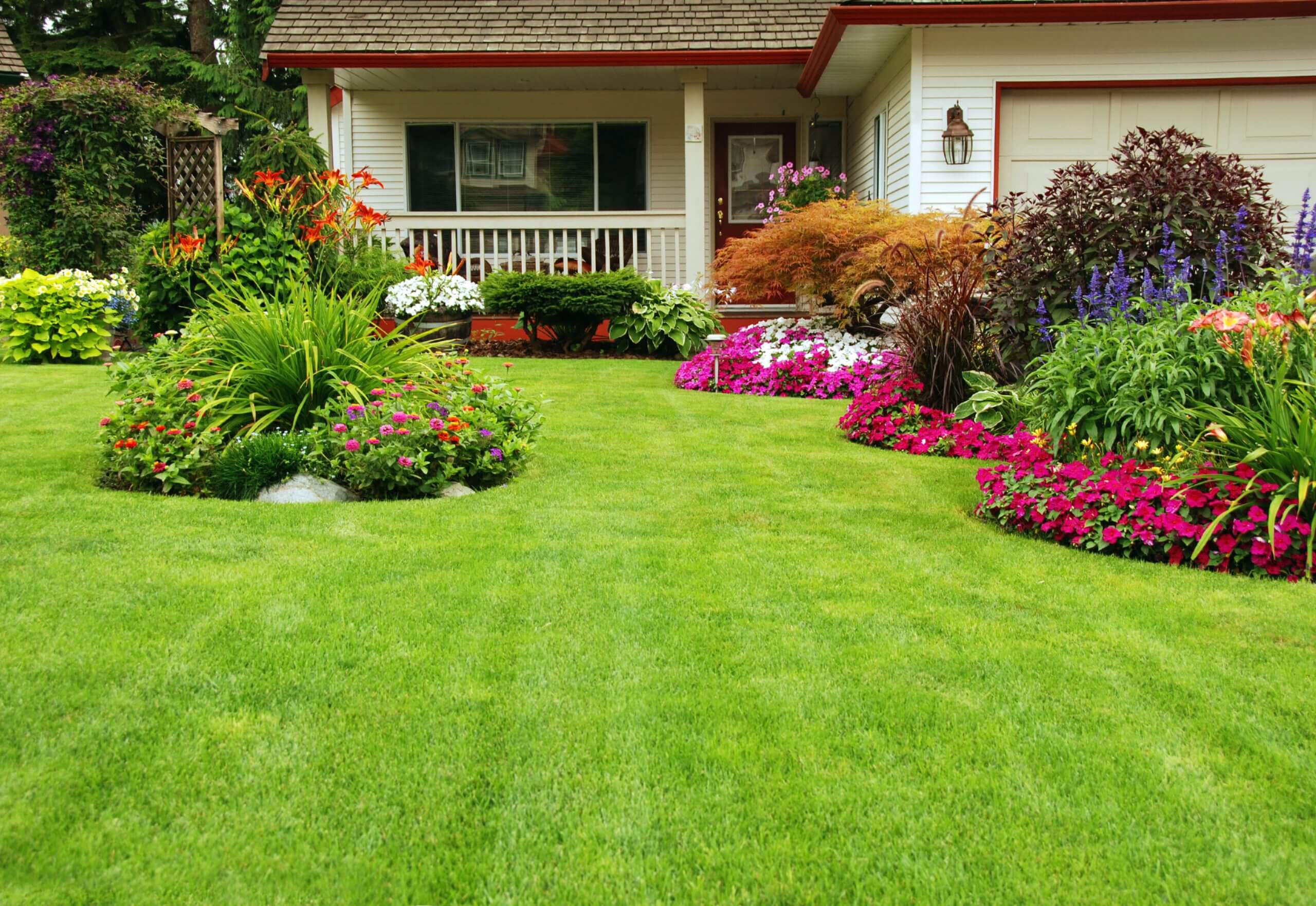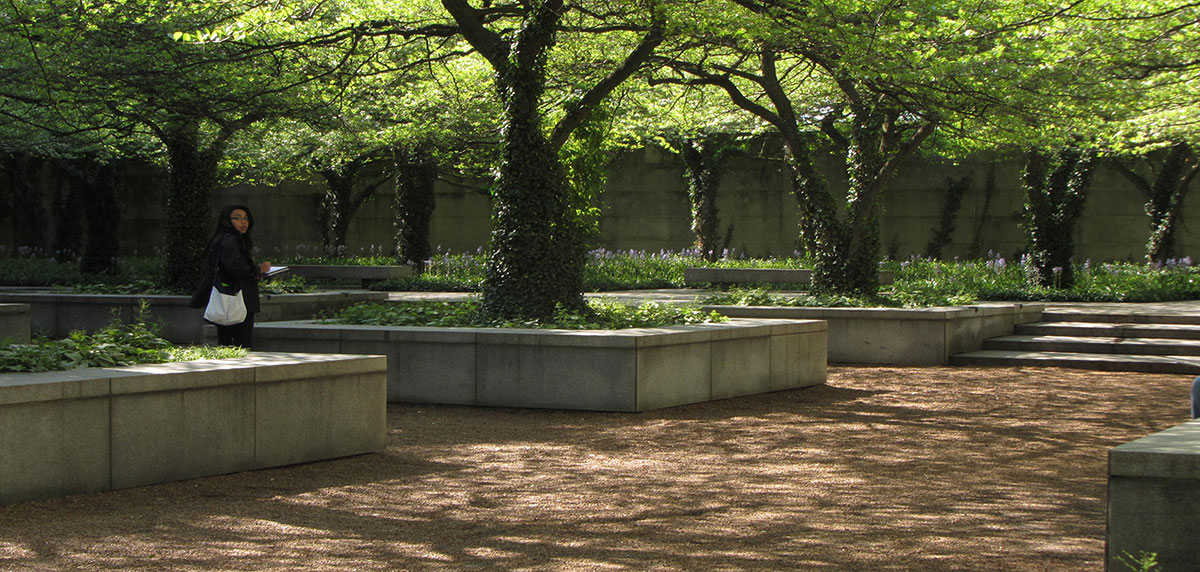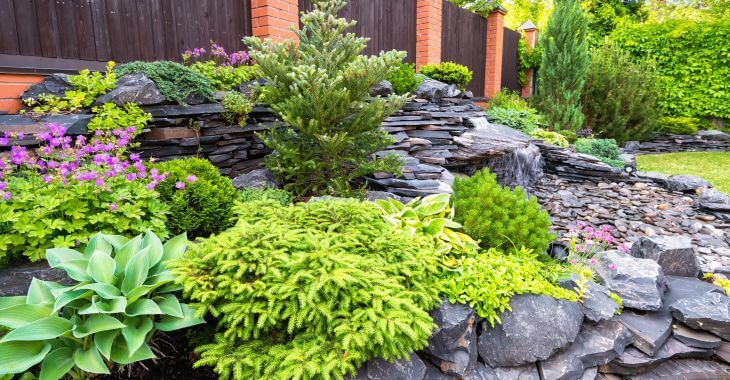Rumored Buzz on Landscapers
Table of ContentsIndicators on Landscapers You Should KnowThe Best Guide To LandscapersA Biased View of Landscapers3 Easy Facts About Landscapers DescribedLandscapers Can Be Fun For AnyoneLittle Known Facts About Landscapers.
- A yard attribute where water is represented by an aggregate rock item, generally a crushed rock or granite. These are most typically found in modern-day and Japanese yard design.- A stone or natural flagstone patio, path, or pathway developed without a concrete base. The base would be compressed crushed rock and the joints would be an aggregate or walkable ground cover. - A rock preserving or totally free standing wall surface developed without making use of mortar. A highly proficient mason is needed for a dry stack rock wall surface. Many walls in Portland are moist stacked, even if they seem. - An underground framework that gather water and allows it to slow percolate into the dirt around it.
Landscape style that is suitable with a websites' environment in both look and sustainability without adverse influences to the setting. Interrupting the landscape is a line of demarcation that creates aesthetic rate of interest in the garden by separating one section from another segment. This can be visual or practical, maintaining one component (such as pea crushed rock) from obtaining mixed into one more (like bark dust).
Areas can likewise sense of "enclosure" supplied by trees, various other plantings, fencings, or displays. The landscape near the access to a structure. A tree, hedge or vine, trained to expand on a wall surface or fencing right into a certain pattern. Specifically beneficial for fruit trees, making it very easy to gather the fruit and having mess.
Unknown Facts About Landscapers

The element in a landscape design or area in a landscape that is indicated to be most prominent. The focal point can be a plant, boulder, statuary, collecting room, or various other landscape feature. A style of yards or garden elements that emphasize straight lines, ideal angles and circles. Bushes or shrubs situated in beds near the structure of a home or various other framework.

An Unbiased View of Landscapers
Rock product, either rounded or fractured, that is relatively small- typically 1" or much less. Low plants that are enabled or encouraged to spread over an area. Can describe any type of "difficult" garden aspects consisting of statuary or rocks but a lot of typically is utilized informative post to describe paths, outdoor patios, and walls.: Height difference between the level of water in a fish pond (or the level of the pump if it sits outside the fish pond) and the upper outlet of water which influences performance of the water pump in gph (gallons per hour). Thick hedges or trees that form a fencing, screen, or limit.
Fence boards that run flat, commonly utilized in contemporary or Japanese-inspired landscape styles. Appropriate use of imaginary lines can assist the landscape feel linked to the home and other aspects.
A more unwinded garden controlled by bent instead of straight bed lines and a much less rigid structure. Traditional PNW landscapes read what he said are casual. A plant that spreads greater than wanted, or right into habitats where it does damage. Rose city has a list of invasive plants that ought to not be set up in landscapes since they can infect woodlands or rivers and be difficult to manage.
Facts About Landscapers Revealed
Can include head positionings and coverage, pipe sizing, GPM specifications, and products needed to install this system. Licensed professional that makes landscapes, schooled in engineering and architecture as well as in cultivation.
The professional who intends and develops landscape tasks, typically at a residential or small commercial degree with the major design incentive on growings. Landscape developers commonly have much less education than Landscape Architects and are not certified. A finished landscape style, detailing all aspects for the new landscape. This normally takes the kind of a drawing theoretically.
Using numerous growings of the exact same variety to fill up in an area in the landscape. This can decrease upkeep and water usage in the yard.
A layer of garden compost or bark dirt used at the base of a plant. A plant that was present in a geographical place prior to individuals began changing the landscape.
Landscapers Fundamentals Explained
Exactly how the garden or a garden element is organized in partnership to an existing or brand-new attribute or to an instructions. Preserving a lawn without using chemical herbicides, chemicals, or fertilizers. Grasses that are not mowed but grown in landscapes as perennials. This is a partially open sided leisure or recreation area that joins a dwelling, used for amusing, outside eating and just delighting in the exterior environment.

Plants that provide seasonal passion and then die back in the winter. Cold season lawn that is the most usual lawn lawn in Rose city, OR and the rest of the PNW.An open roofed structure over an outdoor patio or other landscape feature.
The most usual landscape gravel in the PNW. Location of the landscape designed to handle rainfall water till it can saturate right into the ground.
Framework made of timber, concrete, leading rocks, bricks or other materials for stabilizing inclines and stopping extreme erosion. Narrow gutter. Producing a garden feature consisting mainly of stones with growings that enhance and can prosper in the rough environment. Lawn sprinkler head style that rotates a stream of water throughout an area.
More About Landscapers
